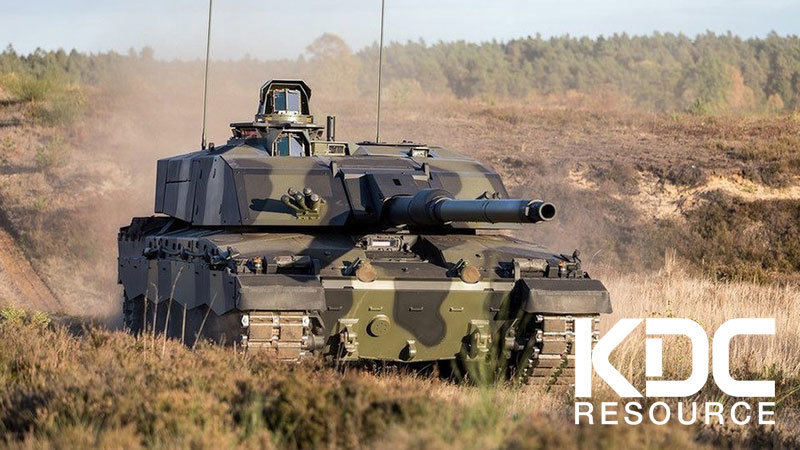

In early May 2021, the UK government announced a major upgrade military contract worth £800 million. Led by Rheinmetall BAE Systems Land, the order is for 148 Challenger 3 tanks, upgraded from the Challenger 2 tanks currently in service.
The project will be a significant step forward in the UK’s defence capabilities, as it promises to produce the most lethal tank in Europe. Let us take a look at what exactly this entails.
As a major UK defence contractor, it is no surprise that RBSL won the Challenger 3 project. It will create 200 skilled jobs at RBSL itself, including 130 engineering positions and 70 technicians. The project will establish a further 450 jobs along the supply chain in Newcastle upon Tyne, the Isle of Wight, and the West Midlands.
The 148 Challenger 3 tanks will come from the Army’s current stock of 227 Challenger 2 tanks, which have been in service since 1998 and have yet to receive an overhaul. The MOD stated the new Challenger 3 tanks would begin operation in 2027and full rollout would happen by 2030. While the Army did not announce an official lifespan for the tank, we can assume it will be at least 20 years.
Of course, adding such a large number of skilled engineering jobs to the UK’s already large defence sector is a promising sign. Considering how many industries have seen a slump in the last 18 months, it is a welcome change to see a potential 650 jobs on offer over the next few years.
But what changes has the Army announced as part of this project? What will make the Challenger 3 the most lethal tank in Europe?
The most significant change to the Challenger 3 will be its new turret. It will contain a NATO 120mm smoothbore L55A1 gun from Rheinmetall. The L55A1 can make use of the most advanced ammunition currently available, and will also share this ammunition with other NATO allies. This marks a notable difference from the Challenger 2, whose older L20A1 120mm gun has a rifled barrel and two-part ammunition. Due to this setup, it has been left behind with recent ammunition advances.
Although the Army did not announce any official ammunition, a fair guess would be Rheinmetall’s KE2020Neo. Utilising this could offer a 20% increase in performance over the Challenger 2’s current gun. Also, the new gun will allow the Challenger 3 to utilise programmable ammunition, such as the DM11. In short, the L55A1 promises to be a more adaptable and better-performing weapon, which translates to greater lethality on the battlefield.
On the system side, BAE plans to upgrade various components. The Challenger 3 will feature an automatic target detection system and Thales Orion long-range thermal cameras to enable day-and-night imaging. The gunner and commander will both have stabilised sights, and the driver will have front and rear thermal imaging cameras. Finally, the tank will include a data link to enable information sharing with other vehicles on the battlefield.
Of course, upgrading the weapons systems would be meaningless if the tank is unable to defend itself. Considering vehicles on the battlefield are faced with more threats than ever before, BAE is putting a lot of work into the tank’s protection.
One major upgrade will be electromagnetic protection. The Army stated the tank would undergo significant testing to ensure it will survive in even the most demanding environments. However, it stopped short of stating exactly what this would involve. Part of the tank’s active protection system will likely be similar to the current Trophy system used on Israel’s Merkava MkIV tanks. Alternatively, BAE might favour the Iron Fist system, which it displayed for its previous Challenger 2 upgrade proposal.
The Army made a similarly ambiguous statement about the tank’s “modular armour”. It is likely this will involve the new turret system but could also include an applique kit similar to that used on the Challenger 2. We can expect the turret to include blowout panels to redirect explosions. As the Army was explicit in its use of the term “modular”, we will likely see an armour system that is adaptable to different combat situations and threats.
To move the Challenger 3, BAE plans to use the CV12-8A engine, an upgrade of the Challenger 2’s CV12-6A. It will also include third-generation hydrogas suspension, the same system used as part of the Heavy Armour Automotive Improvement Programme across the Army’s vehicle fleet.
Importantly, too, the Challenger 3 will feature improved electrical architecture and more efficient power consumption. On top of this, BAE will design the system with growth potential, which should help to save money on any future architectural upgrades.
Such a significant military contract is good news for the UK’s defence economy. While the benefits of a more lethal tank are obvious for the military, the better news is the large number of new jobs this project will create. Hopefully, if the UK government is able to manage this project effectively, it will pave the way for further high-budget military contracts in the future.